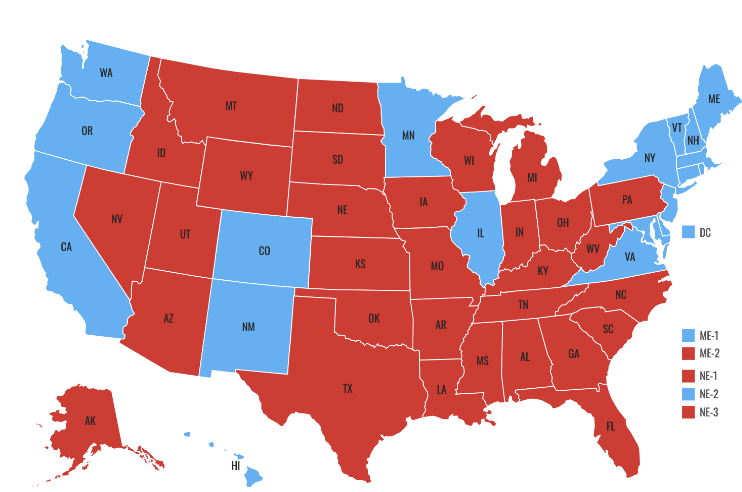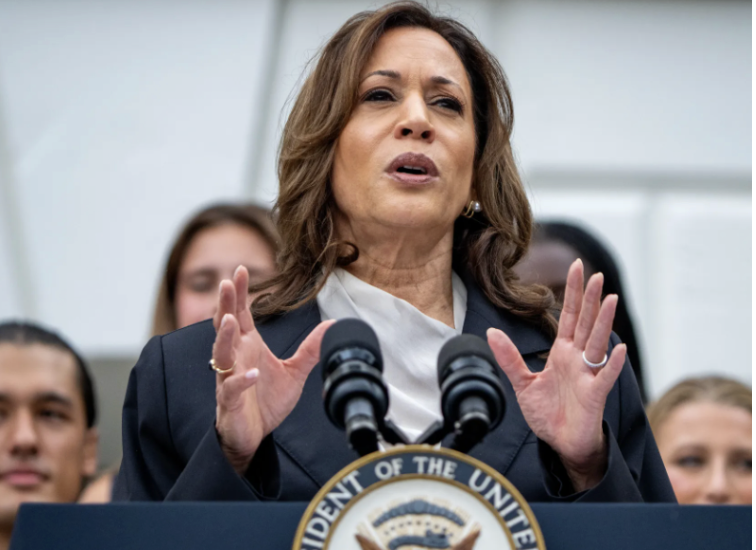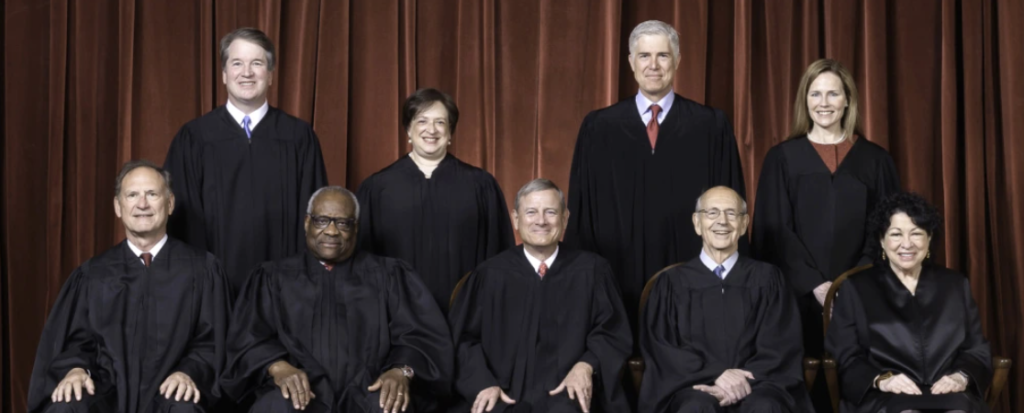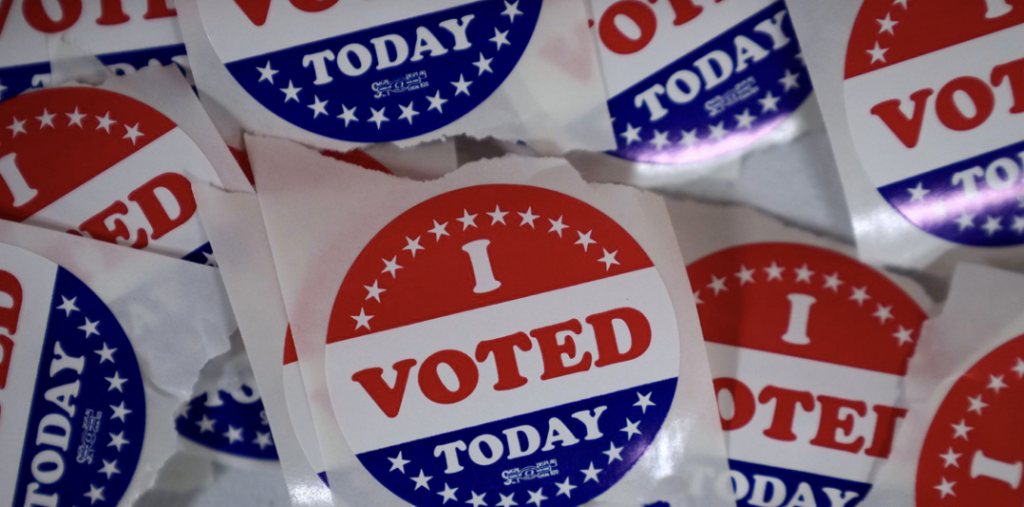The American people have spoken: Donald Trump will be our 47th President.
Although polls projected a close race against the Democratic nominee, Vice President Kamala Harris, Trump won the election in a landslide. He claimed 312 electoral college votes to Harris’s 226, victories in all seven swing states and won the popular vote by 50.5 percent.
Source: NBC News
After four years out of office, Trump is set to be inaugurated on January 20. His win marks a new direction in U.S. history. Trump asserted in his victory speech that he intends to catalyze “a golden age” for the country, naming his campaign an unprecedented political feat. Trump’s address spoke to his movement’s strength and magnitude.
He remarked, “This is a movement like nobody’s ever seen before and, frankly, this was, I believe, the greatest political movement of all time. There’s never been anything like this in this country, and now it’s going to reach a new level of importance because we’re going to help our country heal.”
Meanwhile, Harris’s concession speech drew on her priorities for a peaceful transfer of power, directly contrasting Trump’s 2020 election statements in which he claimed voter fraud. “A fundamental principle of American democracy is that when we lose an election, we accept the results,” she said. “That principle, as much as any other, distinguishes democracy from monarchy or tyranny. And anyone who seeks the public trust must honor it.”
For Trump, the road back to the presidency was riddled with bumps and challenges. At the dawn of a Biden-Trump rematch, the President-elect was hopeful about his chances. Biden’s age and subpar debate night performance on June 27 drew questions about his ability to lead the nation.
As debate night criticism swelled, Biden prioritized the Democratic party’s odds of beating Trump. After several weeks of reflection, Biden ended his reelection campaign. He then endorsed Harris, leaving her with just three months to convince Americans to vote for her. Harris’s campaign became a sprint from behind.
Source: Vox
Harris’s election bid was initially invigorating. She ran an optimistic campaign and saw a lot of early momentum. Then, an unthinkable act of political violence occurred. At a rally in Pennsylvania, a gunman fired at Trump, grazing his ear with a bullet. In the aftermath, both campaigns issued vehement condemnations of political violence. Images of Trump with a defiant fist raised to the sky circulated, and the subsequent Republican National Convention became a resounding affirmation of the MAGA movement. Together, these events defined a poignant political moment.
Source: Vox
The campaign trail reflected Trump and Harris’s contrasting visions on domestic and foreign policy, especially on issues like immigration, economic policy and reproductive rights. Trump emphasized a return to strict immigration controls, advocating for mass deportation and increased border security. He also pursued protectionist economic policies, such as increasing tariffs in an attempt to bolster American industry. Leading up to the election, the economy ranked as the most important issue for voters across the country; 90% of voters classified candidates’ positions as “extremely” or “very” important to their vote.
Immigration also drastically increased in importance among voters. 82% of Trump supporters say it was very important to their vote, up 21% from 2020. Polls consistently demonstrated that voters trusted Trump more on these two issues. On the highly contested issue of abortion, Trump said he would not sign a national ban, even saying he would veto it. This deviation from the standard pro-life platform of the Republican Party allowed Trump to gain support among women despite the fact that 60% of voters believe abortion should be fully legal. Abortion also ranked lower among the issues of importance, with fewer voters saying it would be a “major factor” in their vote than the economy or immigration.
President Biden’s low approval ratings, which hovered around 40% throughout the election cycle due to inflation and perceived inaction on the border crisis, also cast a shadow over Harris’s campaign as she struggled to distance herself from Biden’s policies. Divisions within the Democratic Party, particularly between progressives and centrists, made it challenging for Harris to take firm stances that resonated with the broader populace. An August poll showed that only 64% of registered voters knew what Harris stood for, compared to 86% for Trump.
Trump made notable inroads across various minority groups. Despite the importance of reproductive rights to this election, only 53% of women voted for Harris, compared to 55% for Biden in 2020. Trump also increased his share of the Black and Hispanic vote, especially among men. About one-in-five Black men voted for Trump, while Latino men leaned to Trump for the first time, shifting by 14 points from 2020. Harris also had the lowest support among voters aged 18-29 in this century. These statistics indicate that Democrats may no longer be able to rely on the so-called “Obama coalition,” comprising racial minorities, women and young voters.
The results highlight a shift in the political landscape, where voters were more responsive to Trump’s policies on the economy and immigration reform over Harris’s identity-centered appeals. Perhaps the most shocking statistic of the election was that among voters who believed that democracy in the United States was under threat, a common anti-Trump talking point, 58% voted for Trump, compared to only 40% for Harris. This was likely due to voters’ dissatisfaction with the method by which Harris won the nomination after Biden’s withdrawal.
The results highlight a shift in the political landscape, where voters were more responsive to Trump’s policies on the economy and immigration reform over Harris’s identity-centered appeals.
Trump’s success extended to Republicans competing in tightly and consequential congressional races. Republicans reclaimed the majority in the Senate, flipping key seats in West Virginia and Ohio. Democrats barely held onto seats in the “blue wall” of Michigan and Wisconsin. In Arizona, one Senate seat remains to be called. If the seat goes blue, as the current tally suggests, Republicans will enter the new year with a 53-seat majority. The House majority still hangs in the air. Republicans currently hold 212 seats to the Democrats’ 203, with 20 races remaining uncalled. A majority requires 218 seats.
Trump will likely enter the White House with control of the White House, Congress and Supreme Court. With a congressional and judicial majority behind him, the Trump presidency could bring numerous changes, including tax reduction, mass deportations, removal of climate policies and imposition of massive tariffs.
With a congressional and judicial majority behind him, the Trump presidency could bring numerous changes, including tax reduction, mass deportations, removal of climate policies and imposition of massive tariffs.
The Supreme Court (SCOTUS) already leans to the conservative majority with six justices to three, mainly because of Trump’s first presidency, in which he appointed Neil Gorsuch, Brett Kavanaugh and Amy Coney Barrett – three conservative justices – to the bench. SCOTUS’s conservative core sent shockwaves through America with controversial decisions such as the overturn of Roe v. Wade and the outlawing of Affirmative Action. If Trump has the opportunity to appoint yet another justice in his next four years, SCOTUS will further solidify its majority.
Source: NBC News
The 2024 election raises many questions about America’s political future. Will the MAGA movement outlive Trump and maintain its grip on the Republican party, or will it vanish with the end of Trump’s second term? Will the Democratic party embrace its progressive base or shift towards the center of the political spectrum to appeal to independents and working-class voters?
One thing remains certain: America is deeply polarized. But the beauty of democracy is that we can voice our differing opinions while uniting on shared values of justice, civil discourse and the hope for a brighter future. So, where do we go from here? And, how do we get there?
Source: ABC7 Chicago











